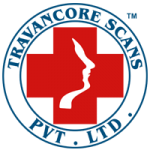Angiography
Angiography or arteriography is a time-tested way to study the health of veins and arteries. Though often associated with the heart, it can be used to determine whether blood vessels throughout the body are blocked, damaged or malformed.
Traditional angiography, also known as X-ray or catheter angiography, is a minimally invasive procedure during which a small tube is threaded through the body to the area being studied. The tube is used to inject a dye that highlights blood vessels and makes them easier to see on X-ray images.
With computed tomography angiography no tube is necessary and the dye can be placed with a simple injection in the arm. to create images of blood vessels. Because there is no need to thread a catheter through the body, a CTA is usually faster and causes less discomfort than traditional angiography. A CT scanner uses a thin X-ray beam and advanced computer analysis to create highly detailed images.
While traditional angiography must be used for various treatment options (such as the placement of stents or angioplasty), angiography to diagnose conditions is increasingly being done using noninvasive CT angiography.
CT angiograms are performed for the following reasons:
- To detect aneurysms(places where a blood vessel bulges or balloons out)
- To determine whether any blood vessels are torn
- To examine the buildup of plaque or other blockages in blood vessels
- To determine the degree of artery disease, particularly of the blood vessels around the heart
- To investigate problems in the brain, such as strokeor cerebral bleeding
- To identify blood-flow problems, such as circulatory problems in the legs
- To examine any malformations of the blood vessels
- To evaluate coronary veins before placement of a pacemaker
- To check on the effectiveness of an earlier angioplasty or stent procedure
- To evaluate the results of a bypass surgery
- Angiograms are also sometimes used by surgeons to plan an operation or to choose the best surgical procedure
CT Brain/Neck Angiography
Before Arriving for Your Exam
Continue taking all of your current medications. Do not take Viagra®, Cialis® or Levitra® for 48 hours before exam.
Because you will need to wear a hospital gown for your exam, wear clothing that can be changed easily.
Leave all jewelry and valuables at home.
If your doctor gave you an order, please bring it with you.
Though we do not anticipate any delays in your exam, please consider bringing a book, magazine or music player to help you pass the time while you are waiting.
After Arriving
A radiology nurse or technologist will ask you a few questions regarding your medical history.
Please tell the technologist, radiology nurse and/or physician of any allergies you may have before your exam, or if you are or might be pregnant.
You will be asked to change into a hospital gown and a nurse or technologist will insert a small IV in your arm.
During Your Exam
While positioning you on an exam table, the technologist will explain your procedure and answer any questions you may have.
If contrast dye is being used, it will be injected through your IV.
During the injection, you may experience a warm sensation all over your body and a metal taste in your mouth. This is normal.
If you experience any itching, sneezing, nasal congestion, scratchy throat or swelling of your face, please notify the technologist immediately.
The exam table will slide into the scanner, only covering the part of your body which is being studied. The scanner is open at the back and the front, allowing you to see out.
The technologist will always be able to see and hear you during your exam.
You may be asked to hold your breath for a short time while the scanner takes a series of pictures. The time it takes to actually acquire images is very brief.
The images will be reviewed, and if necessary, some may be repeated.
This procedure usually takes approximately 15-30 minutes. Your total time commitment will be approximately an hour and a half.
Below: Image of a CT angiogram of the blood vessels in the neck. The vertebral artery is between the vertical lines. The arrow points at the spine.
After Your Exam
You may resume your normal diet.
If you received an injection of contrast dye, you should drink six to eight glasses of water to flush it out of your system.
CT Angiography Abdomen, Kidneys, Extremities
Your doctor has recommended you for computed tomography angiography. A CT scanner uses a combination of a high-tech X-ray scanner and sophisticated computer analysis to provide detailed, 3D images of the blood vessels in your body, such as those in the abdomen, kidneys and legs. It can be used to identify weakened sections of arteries or veins and to visualize blood flow. CT angiography provides your physicians with more-precise images of your blood vessels than either MRI or ultrasound technology..
Before Arriving for Your Exam
Continue taking all of your current medications. Do not take Viagra®, Cialis® or Levitra® for 48 hours before exam.
Because you will need to wear a hospital gown for your exam, wear clothing that can be changed easily.
If your doctor gave you an order, please bring it with you.
Leave all jewelry and valuables at home.
Though we do not anticipate any delays in your exam, please consider bringing a book, magazine or music player to help you pass the time while you are waiting.
After Arriving
A radiology nurse or technologist will ask you a few questions regarding your medical history.
Please tell the technologist, radiology nurse and/or physician of any allergies you may have before your exam, or if you are or might be pregnant.
You will be asked to change into a hospital gown and a nurse or technologist will insert a small IV in your arm.
During Your Exam
While positioning you on an exam table, the technologist will explain your procedure and answer any questions you may have.
A contrast agent (dye) will be injected through your IV During the injection you may experience a warm sensation all over your body and a metal taste in your mouth. This is normal.
You will be asked to lie flat on your back. In some cases, pillows or straps may be used to keep the area being examined from moving during the scan.
The exam table will slide into the scanner, only covering the part of your body which is being studied. The scanner is open at the back and the front, allowing you to see out.
The technologist will always be able to see and hear you during your exam.
You may be asked to hold your breath for a short time while the scanner takes a series of pictures. The time it takes to actually acquire images is very brief.
The images will be reviewed, and if necessary, some may be repeated.
This procedure usually takes approximately 15-30 minutes. Your total time commitment will be approximately an hour and a half.
After Your Exam
You may resume your normal diet.
You should drink plenty of fluids to help flush the contrast dye out of your system.


